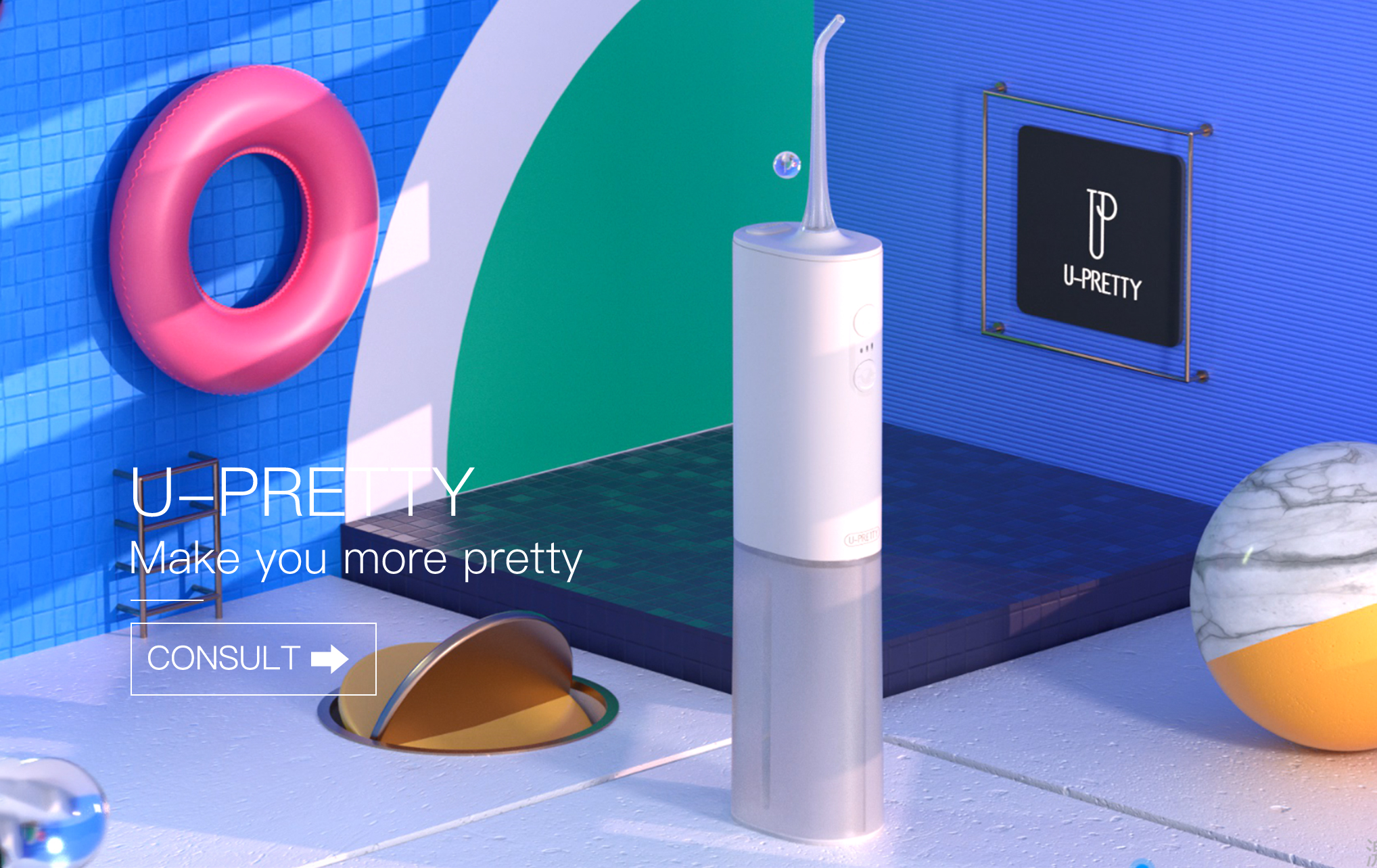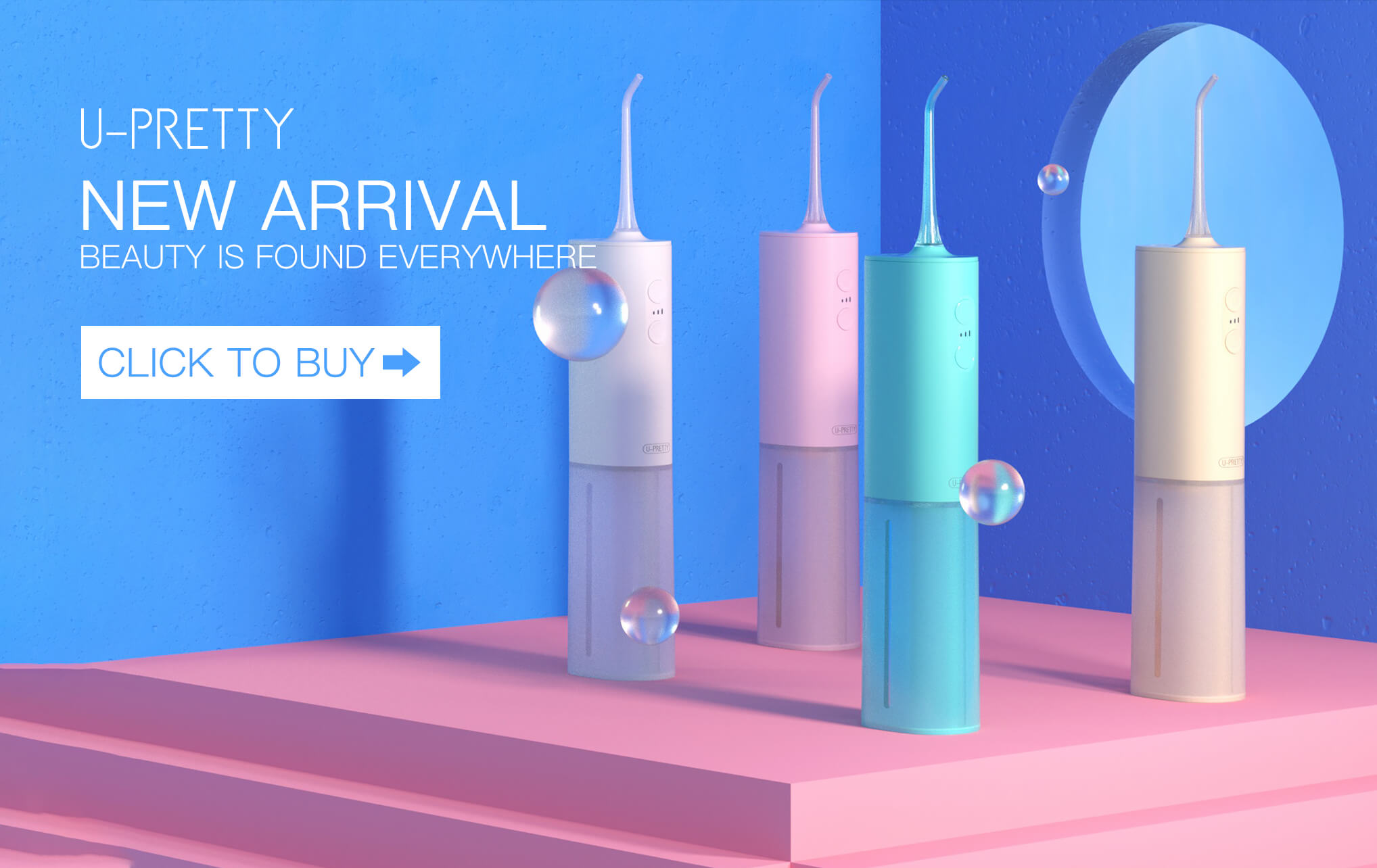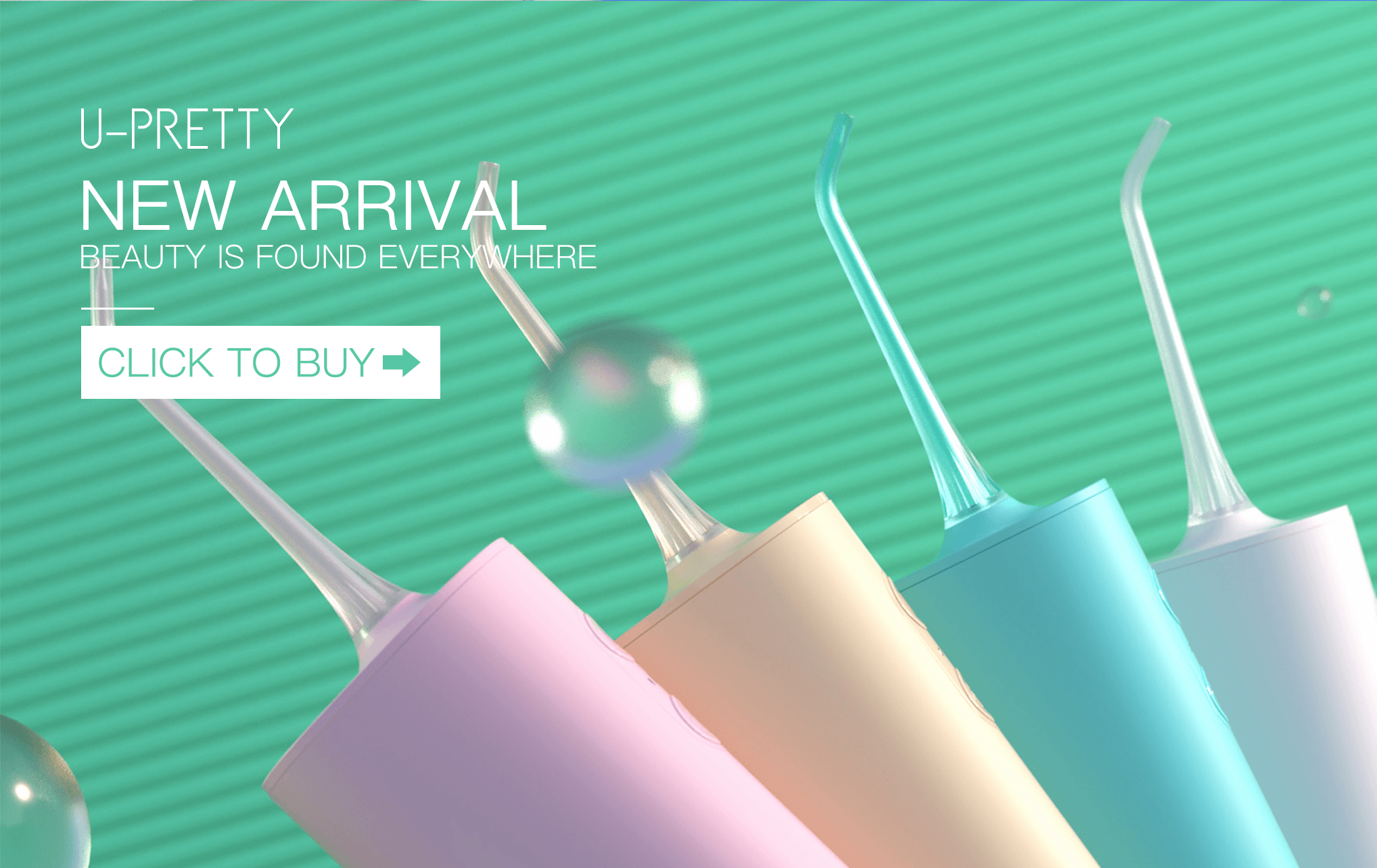New dental technology:Oral irrigator

Oral irrigator is a kind of auxiliary tools to clean teeth by pulsed water flow. There are mainly portable and desktop types. The general flushing pressure is 0 to 90 psi.
As is known, water cannons can easily clean cars etc., proper pressure of water has long been proven to effectively clean people's teeth and mouths. The cleaning effect of the oral irrigator is achieved mainly by the use of high-speed water jets sprayed under a certain pressure. Based on the impact of the water flow itself, the following measures may further improve the cleaning effect:
1) A similar vibration shock can be caused by injecting the water flow in the form of a suitable pulse or by introducing more bubbles into the water flow.
2) Add some additives with different functions to the water flow, such as adding fine hard heavy sands to form numerous high-speed "bullets", or adding some surfactants to increase the cleaning function. The water column's impact cleaning ability is also related to the water column’s size.
3) By changing the frequency of the pulsed water flow, the best combination with pressure is achieved. For example, the professional dental cleaning machine in the dental clinic is more than 20,000 times of high frequency. From the principle of cleaning the object by frequency vibration, the higher the frequency, the better the cleaning effect.
There are two main sources of water pressure required for the oral irrigator:
1) Water pressure is generated by a self-powered pump.
2)Direct use of water pressure. Therefore, the oral irrigator can be mainly divided into two categories: electric oral irrigator and faucet oral irrigator. Electric oral irrigator mainly has an electric water pump, a water storage tank and a nozzle. Faucet oral irrigator mainly has a connection device with the faucet and a nozzle.

NECESSITY
At the junction of the tooth and gum, there is a groove about 2 mm deep around the teeth but not attached to the teeth called gingival sulcus. This is the most important point to the root of the teeth while it is the most vulnerable to get dirty, so it is the most prone to tooth and gum disease. The gingival sulcus and the tooth gaps are the two most difficult places to clean. Some studies have pointed out that "as much as 40% of the tooth surface cannot be cleaned with a toothbrush". Although dental flosses or toothpicks can remove the surface deposits on the teeth, microscopically, the uneven surface of the teeth will still be unclean. Bacteria need only a very thin layer of nutrient film to grow, and the remaining harmful effects of the dirty film are still partially present. The pressurized water flow that is both powerful and capable of drilling into the hole is the most ideal way of oral cleaning in principle. According to researches by relevant agencies in the United States, the pressurized water column can be flushed into the gingival sulcus to a depth of 50-90%. The pressurized water column can not only clean all kinds of gaps, holes, convexities and concavities, but also can achieve thorough cleaning microscopically instead of just rough clearing macroscopically. In addition to clean the mouth, water out of the oral irrigator can massage gums so as to promote their blood circulation and enhance the disease resistance of local tissues, at the same time, it can eliminate the bad breath caused by poor oral hygiene.
INFLUENCES
Food particles stuck between teeth make people uncomfortable and cause bacteria , the greater harm is that they provide nutrients to the plaque. If not removed in time, dental plaque is easily calcified, then it becomes calculus accumulating in the root of the tooth, compressing and stimulating the periodontal environment and causing periodontal atrophy. Therefore, using oral irrigators, toothpicks or dental flosses to clean teeth is actually a major source of nutrition to block plaque.
FIXED FREQUENCY TYPE
Traditional electric oral irrigators have a long history in the market. In terms of product structure, the AC 220V fixed-speed motor is used to drive the water pump to generate a constant pulsed water flow, and the pulse rate is fixed at about 1200 times/minute. AC motor works with high heating, so users should pay attention to the reminder of use time on different models. The single use should not exceed 2 minutes, and the use time should not exceed 5 minutes every 2 hours in case the machine overheats and causes service failure.
HOUSEHOLD FREQUCENCY CONVERSION TYPE
The pulse frequency of the frequency conversion oral irrigator is adjustable in the range of 1320-1500 times / minute. At the same time, the inlet water volume can be adjusted. Generally speaking, the higher the vibration frequency, the better the cleaning effect, which is also the reason why dental descalers in professional dentist’s use ultrasonic frequencies. Frequency conversion oral irrigators have a combination of frequency and pressure, which can massage gums at low pressure, and enhance the cleaning effect at high pressure.
In terms of product structure, the frequency conversion oral irrigator adopts high-power DC motor, and the pulse frequency is controlled by computer chips to realize the control over frequency conversion of water flow. The motor has no heat so it can be used continuously. At the same time, the internal circuit adopts the design of DC low voltage, the working voltage is lower than 16V, which is a safe voltage below 36V, ensuring the safe use of electrical appliances in a multi-water environment around the bathroom washstand.
PORTABLE TYPE
With the development of technology, a kind of rechargeable and portable oral irrigator has emerged. The main unit uses a rechargeable battery as a power supply. It lasts up to one to two weeks on a single charge. As it is small in size, the body has no wires and it does not require any external power supply when used, it is suitable for daily use. It is also suitable for outdoor use or places where there is no power supply. For orthodontic people, portable oral irrigators are more suitable because they can clean the food on braces after each meal in any occasion. For more users, they prefer portable oral irrigators as they don’t require to plug in, and it’s much easier to use without the long wire of a desktop type.
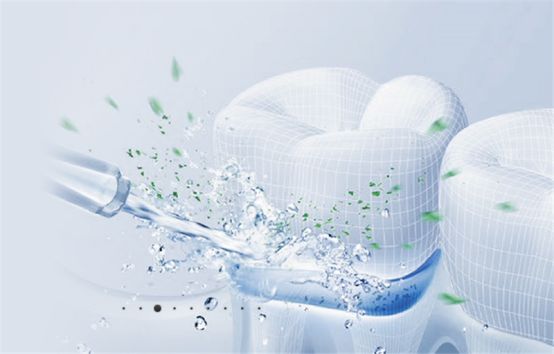
The toothbrush is simple and convenient, and it has a good cleaning effect on the tooth surface that can be reached. The dental floss including toothpick commonly used by Chinese is very good for cleaning food particles tightly stuck in the tooth gaps and part of gingival sulcus. The high-speed water flow from oral irrigator has its unique cleansing and health-care function and is easy to use. The oral irrigator has always been used as an auxiliary supplement for toothbrushes. It is designed as a single water column with limited water volume to clean tooth gaps, gingival sulcus and other places where toothbrushes are difficult to clean. Now there are faucet oral irrigators in the market with multiple water columns and no limit to water volume. They not only keep the traditional functions of the oral irrigators that is rinsing the gingival sulcus and tooth gaps accurately guided by a convex hole contact, but also can sweep the tooth surface, tongue, oral mucosa etc. in large area with multiple water columns. Various cleaning methods have their own characteristics. For optimum oral health effects, these methods can be used in combination. For example, brush teeth before going to bed and after getting up, rinse teeth after meals, floss regularly, treat dental diseases in the hospital in time and go to the dentist’s every six months to a year, interchangeably use a toothbrush, an oral irrigator and a dental floss to keep your teeth clean. All these will keep your oral cavity healthy.
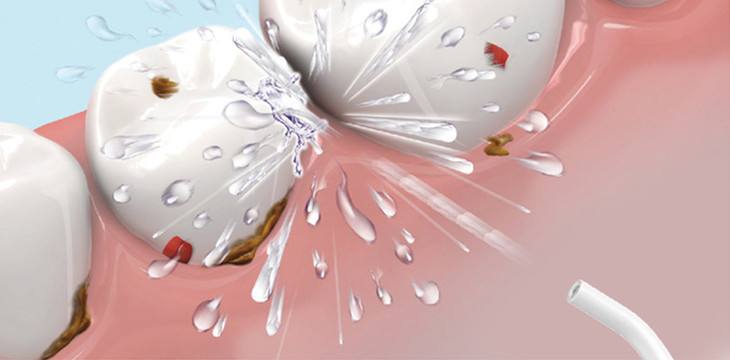
INSTRUCTIONS
Electric oral irrigator is a relatively new type of oral cleaning device. In Europe and the United States, oral irrigators are a must for many families. Oral irrigators have also entered China, and many people have gradually liked this kind of comfortable and useful dental care appliances. For the exposed tooth gaps, its cleaning effect is quite good. The oral irrigator pressurizes the water through the pump, which can produce 800~1600 times of ultra-fine high-pressure pulsed water column per minute. The well-designed nozzle can make this high-pressure pulsed water column flush to any part of the mouth, including tooth gaps and deep in the gums where toothbrushes, floss or toothpick are not easy to reach. Only rinsing 1 to 3 minutes, the oral irrigator can wash away food particles in your tooth gaps. The impact of the high-pressure pulsed water flow from the oral irrigator is a kind of flexible stimulus that not only does not hurt any part of your mouth or face, but also massages the gums which makes you feel comfortable. In order to make the oral irrigator fully play the role of teeth protector, it is best to use it to rinse all over the teeth after each meal. In general, the oral irrigator can be used with water, or you can add mouthwash or analgesic anti-inflammatory drugs to enhance some effects. For middle-aged and elderly people, as their tooth gaps are large, it is easier to remove the food residue in the teeth with an oral irrigator. Compared to toothpicks, the biggest advantage of the oral irrigator is that it does not hurt the teeth surface or periodontal, no matter how it is used. Oral irrigators, toothpicks and flosses are complemented by each other.
CAUTIONS
For daily oral care, twice a day is enough If you can brush your teeth correctly and effectively. But if the method is wrong, it will be useless no matter how many times you brush. If you use too much strength, it will even aggravate the shrinkage of gums. The basic principle of scientific brushing is to ensure that every tooth and every face can be brushed. Although there are a lot of popular science propaganda, even doctors admit that it is too difficult to understand the diagram. Even if you face the model, it is not the same feeling as brushing your own teeth. Sometimes you thought you have brushed your teeth thoroughly, but it’s actually not. So everyone should spend a few more minutes in the morning to brush teeth slowly and carefully.
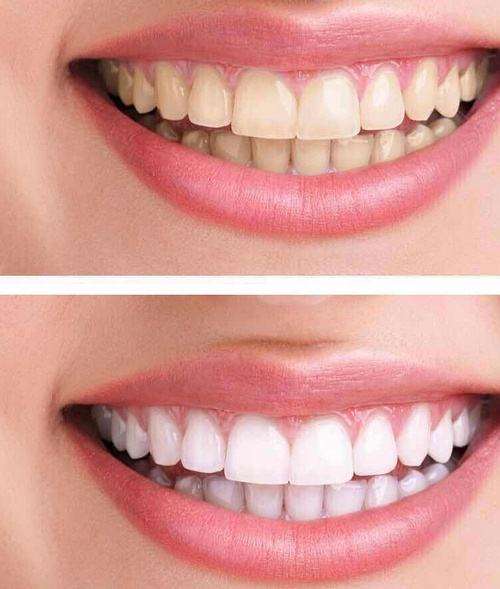
1. Clean the plaque on the surface of the teeth and keep the mouth clean.
2. Clean the tongue coating to remove bad breath.
3. Strongly remove food debris and harmful bacteria that accumulate in the gaps where toothbrushes and flosses are hard to reach, prevent tooth decay, gingivitis, calculus and periodontitis effectively.
4. Massage and stimulate gums, improve blood circulation, relieve toothache, and inhibit gum bleeding.
5. Help children develop good oral hygiene habits and prevent early tooth decay.
6. Clean orthodontic appliances simply and efficiently, it is a powerful tool for people who are undergoing orthodontic correction or wearing dentures to clean the mouth.
APPLICABLE USERS
1. Bad breath
2. Gum bleeding
3. Wearing an orthodontic appliance
4. Oral diseases such as tooth decay, gingivitis, periodontitis etc.
5. Dental implants and dentures in the mouth
6. Oral postoperative cleaning is required to prevent infection

